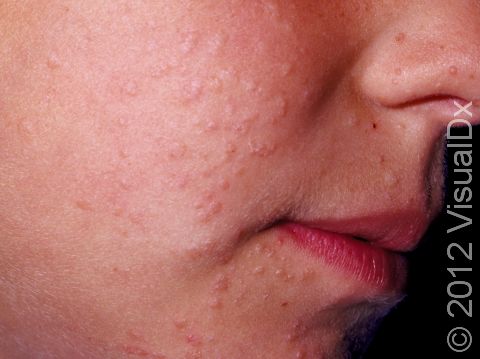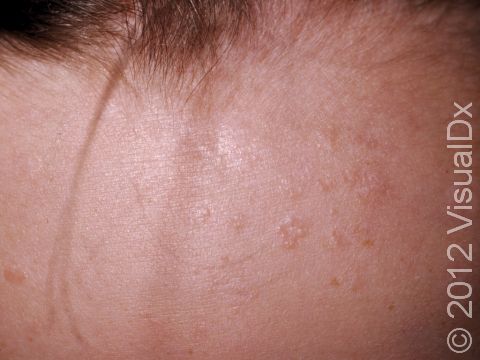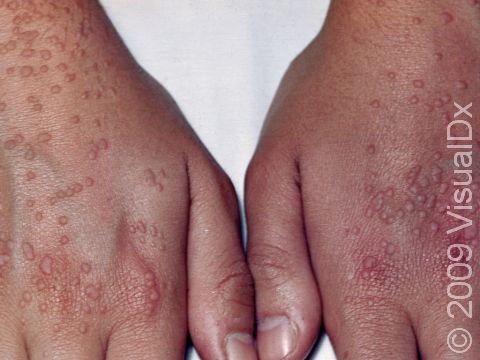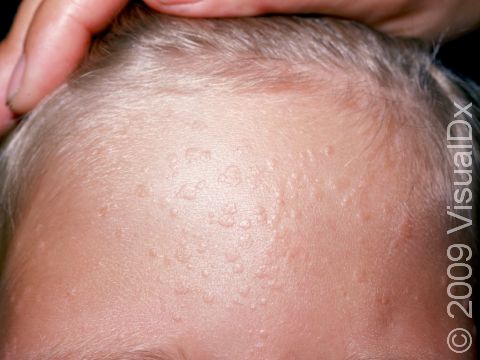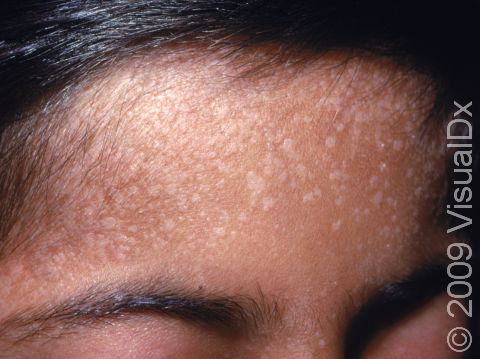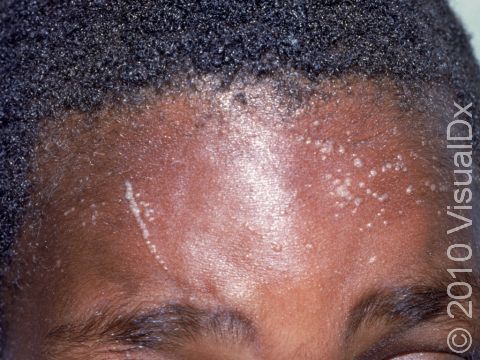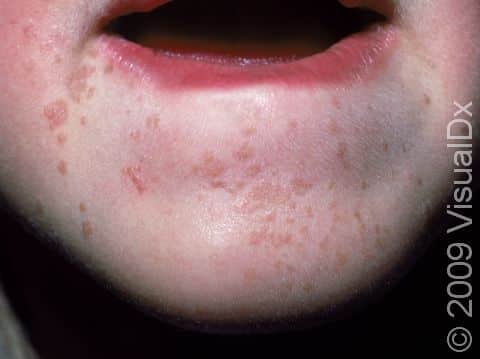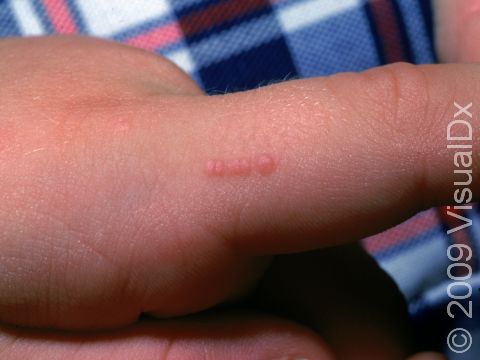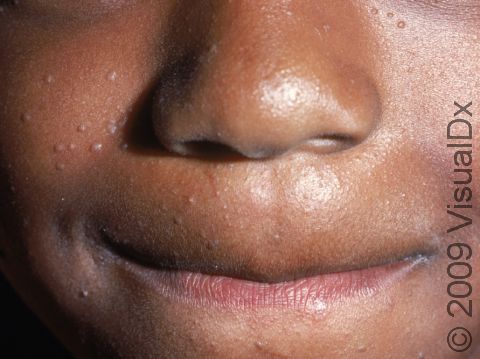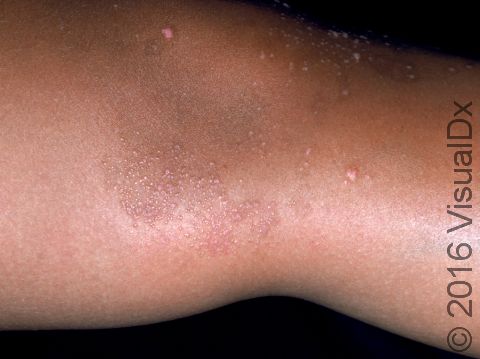Flat Wart
A flat wart, or verruca plana, is a form of wart (verruca). Warts are common growths caused by an infection of the surface (superficial) skin with the human papillomavirus (HPV), which thickens the top skin layer. Warts are usually harmless and painless, and many go away on their own after months to years. In fact, two thirds of warts are gone within 2 years of their appearance.
Warts are passed to humans by person-to-person contact or, rarely, by touching an object used by an infected person. Warts are not highly contagious and usually require a small break in the skin to become infected.
Flat warts tend to stay small in size, but they can be numerous in quantity. Flat warts often spread to other places on the body by scratching or shaving.
Who's At Risk?
Warts can be found on people of all ages, all races, and both sexes.
However, warts are most commonly seen in youths aged 12–16 years. In fact, it is estimated that 20% of schoolchildren have warts. Additionally, whites are more often affected with warts than darker-skinned persons.
People with weakened immune systems (such as with HIV or following an organ transplant) have more trouble with warts.
Signs & Symptoms
The most common locations for flat warts include the following:
- Face, especially in children
- Neck
- Backs of hands
- Arms
- Legs, especially in women who shave
- Beard area, especially in men who shave
Flat warts are very slightly raised smooth skin-colored bumps ranging in size from 1 to 5 mm. Flat warts are usually numerous and may appear in a line because of reinfection within the same person (autoinoculation) from scratching or shaving.
Infection with flat warts can be graded as follows:
- Mild – one or a few painless warts
- Moderate – 10–100 painless lesions
- Severe – more than 100 lesions that cause enough pain to limit normal life activities
Self-Care Guidelines
Because warts can resolve on their own, it is not necessary to treat all warts. Additionally, treating warts may not always destroy them, nor will it necessarily keep other warts from appearing. Treatment can be painful and cause scars and might need to be repeated, so it should only be done in cases where the warts are highly bothersome or interfere with your child’s daily life.
- Over-the-counter wart removers have a high percentage of salicylic acid and work by dissolving away the layer of skin infected with the virus. This treatment needs to be used daily and can sometimes be irritating if it touches unaffected skin around the wart.
- Duct tape applied daily to the affected area seems to work for unknown reasons. The tape should be very sticky and kept on for a few days. (Note: the adhesive may irritate the sensitive skin of some children.)
- Over-the-counter freezing medications are available but have not been found to be very effective.
- Coupled with the above therapies, the wart should be soaked in warm water, and any loose skin should be removed every few days with a mild abrasive, like a pumice stone.
- Family members should avoid sharing personal items such as towels.
Treatments
Once your child has been diagnosed with flat warts, the physician may try one or more of the following treatments:
- Freezing with liquid nitrogen (cryosurgery)
- Burning with an electric needle (electrocautery)
- Using a laser to disrupt the blood supply of the warts
- Application of cantharidin, podophyllin, tretinoin, or salicylic acid
- Injection with bleomycin, a chemotherapy drug, directly into the warts
- Application of imiquimod, a cream that induces your immune system to destroy the warts
Visit Urgency
Make an appointment with a dermatologist or another physician if your child has the following:
- Painful or bleeding warts
- Warts on the face
- Rapidly spreading or multiplying warts
- Warts that interfere with daily life and are not responsive to self-care
Trusted Links
References
Bolognia, Jean L., ed. Dermatology, pp.1223, 1226-1227. New York: Mosby, 2003.
Freedberg, Irwin M., ed. Fitzpatrick’s Dermatology in General Medicine. 6th ed., pp.2121, 2123-2124, 2128-2129. New York: McGraw-Hill, 2003.
Last modified on August 16th, 2022 at 2:44 pm

Not sure what to look for?
Try our new Rash and Skin Condition Finder
